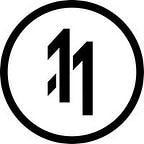How Mission Statements can Create Clarity, Drive Innovation and produce Viral Results.
Buenas,
Today is post finds me on a flight above the Gulf of Maine, immersed in a realization that arose from Made to Stick, by Chip and Dan Heath. One which debates whether messaging and branding could form a mission statement. A statement which can be followed from start to finish. Empowering anyone that wishes to partake in a creation’s development and journey by giving them a clear and solid direction. If one can understand it, one can refer to it. It can guide one’s judgement and as a result, can manage a multitude of individuals. Reducing doubt, queries whilst raising confidence and awareness.
The MFA Products of Design laid out very clearly the importance of branding and messaging in a product. How it all must connect. How it all must have a center point, which often is the audience, user or client. All factors which are fundamental to any successful product. In a way, these frameworks and tie-backs, are a means to create a strong and tight creation.
However, as a personal critique, I find it interesting that I did not understand how messaging and branding in its own right can serve us to make sure we maintain a direction. One which, when developing our product can help us keep us on track and validate our development process. And one which, if done right, can lead to viral results.
To give a service example, I would like to share the story of Nordstrom and their philosophy. For those of you that do not know Nordstrom, Nordstrom is an American chain of luxury department stores whose message to their employees is to deliver the best customer experience ever. This goes against routine customer-services of major department stores, which are focussed on getting the customer in and out of the store as fast as possible. This message has led to the most remarkable stories that are spread by their employees, Nordies, on a daily basis stories such as:
A Nordie ironed my new shirt when I needed it for an afternoon meeting.
A Nordie cheerfully gift wrapped the product that I bought at Macy’s.
A Nordie warmed up my car last winter, while I finished my shopping.
A Nordie refunded my set of tire chains — even though Nordstrom does not sell tire chains.
— Made To Stick, Chip and Dan Heath.
This kind of remarkable branding and messaging has led Nordie’s to create viral stories that suck new customers in to the luxury department story, where these customers are fascinated by new acts of kindness. And what’s more is that it has given the Nordie’s a message to follow, reducing management and empowering them to deliver these incredible acts of generosity.
A different, more product-centered example is that of Sony. It’s hard to believe in the modern day that the Japanese Tech-Leviathan was once struggling. Yet, in the rubble of Tokyo after World War II, Sony was struggling to stay in business. Although it had a great team of scientists and engineers, they had not yet hit gold. At the time, Masaru Ibuka, Sony’s Lead Technologist was attracted to Bell Labs latest innovation — the transistor. Immersed in the vision created by the promise of this revolutionary technology, Ibuka fought the Japanese Ministry of Trade and Industry for years for a Transisitor License. Finally, in 1953, Sony secured a transistor license which allowed Ibuka to create a message that would engage his talented employee’s:
A Pocket-sized Radio.
A simple, short and engaging vision which intrigued his employees and empowered them. Given that Bell Labs had deemed it impossible, this message was outstanding. A true challenge. What better branding and messaging than let’s best the innovators and prove them wrong. This dream of a transistor, pocket sized radio led Sony to grow to 1,200 employees by 1957 and in March of that very year, they would launch the TR-55. The first pocketable radio, which sold 1.5 million units and put Sony on the map as a innovation tech-hub.
Finally, inspired by this notion of branding and messaging as management. Jose Ciaschi, my business partner and I, decided to employee this thinking to create our own mission statement for Muralize. This statement was created based on the following framework:
The mission is _____.
The trigger is _____.
The message is _____.
The audience is _____.
And turned out like this:
The mission is creating the works best Instagram styling tool.
The trigger is tetris.
The message is at your finger tips.
The audience is brands.
All thoughts welcome,
O.
If you are interested in learning more about Oscar’s pursuit, please click here.
If you like this post please don’t forget to 👏👏👏👏👏👏👏👏👏.
